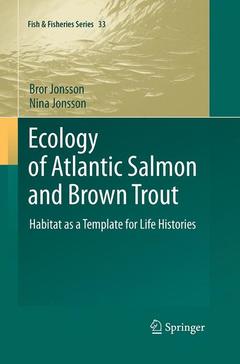Description
Ecology of Atlantic Salmon and Brown Trout, 2011
Habitat as a template for life histories
Fish & Fisheries Series, Vol. 33
Authors: Jonsson Bror, Jonsson Nina
Language: English
Subjects for Ecology of Atlantic Salmon and Brown Trout:
400.89 €
In Print (Delivery period: 15 days).
Add to cartPublication date: 08-2016
Support: Print on demand
Publication date: 05-2011
708 p. · 15.5x23.5 cm · Hardback
Description
/li>Contents
/li>Comment
/li>
The abundance of wild Atlantic salmon populations has declined in recent years; climate change and escaped farmed salmon are major threats. The climate influences through changes in temperature and flow, while escaped farmed salmon do so through ecological competition, interbreeding and the spreading of contagious diseases. The authors pinpoint essential problems and offer suggestions as to how they can be reduced. In this context, population enhancement, habitat restoration and management are also discussed. The text closes with a presentation of what the authors viewas major scientific challenges in ecological research on these species.
Preface
Habitats as template for life histories
Species diversity
Habitat use
Development and Growth
Smolts and smolting
Migrations
Maturation and spawning
Recruitment, mortality and longevity
Climatic effects on Atlantic salmon and brown trout
Farmed Atlantic salmon in nature
Population enhancement and population restoration
General conclusions and research tasks
Glossary
Species Index
Author Index
Subject Index




